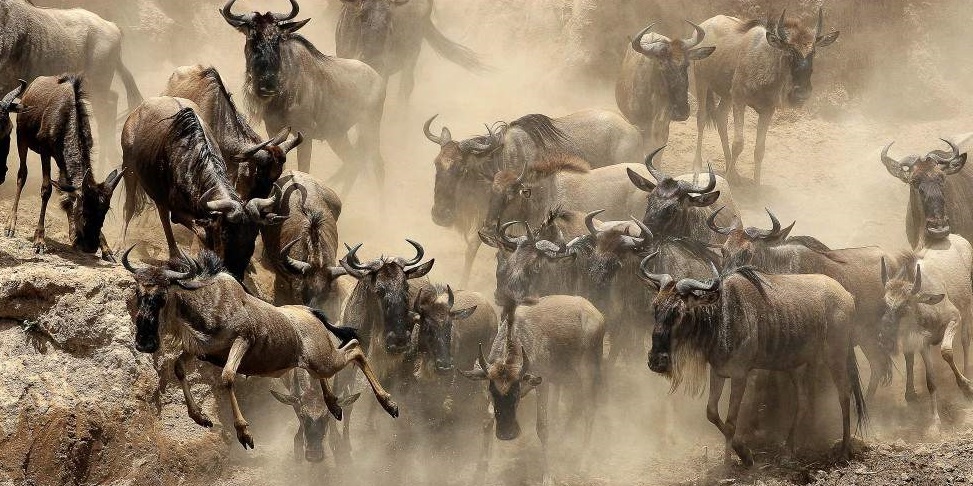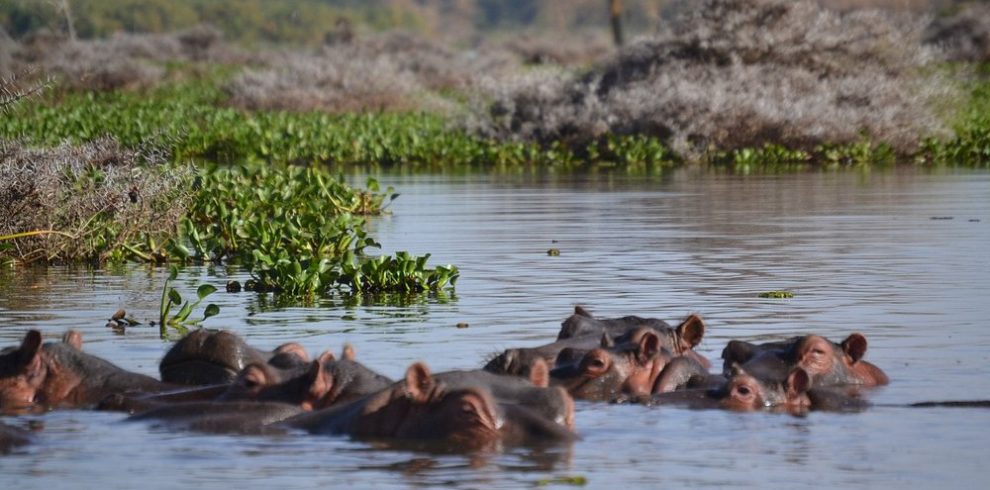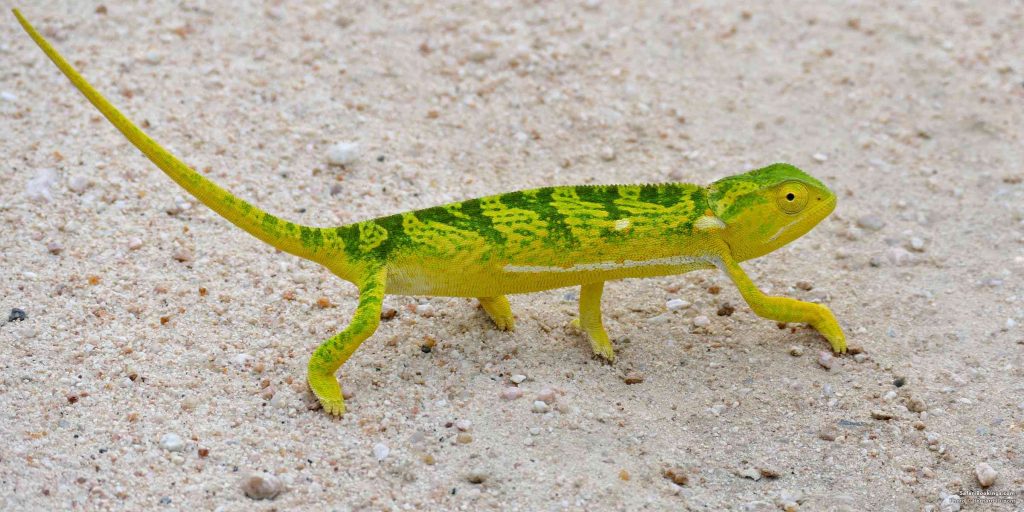
The flapneck chameleon, a captivating creature of vibrant colors and dynamic behaviors, stands out among the diverse array of chameleon species. The African spitting cobra is a highly distinctive animal with several special qualities and capabilities that warrant its existence as a figure of fascination among the naturalists, wildlife observers, and reptile fans. Known for its dramatic appearance and adaptable nature, the flapneck chameleon deserves to be explored in depth. This article delves into five fascinating facts about the flapneck chameleon, highlighting its behavioral traits, remarkable physical attributes, and ecological significance.
1. Distinctive Physical Appearance
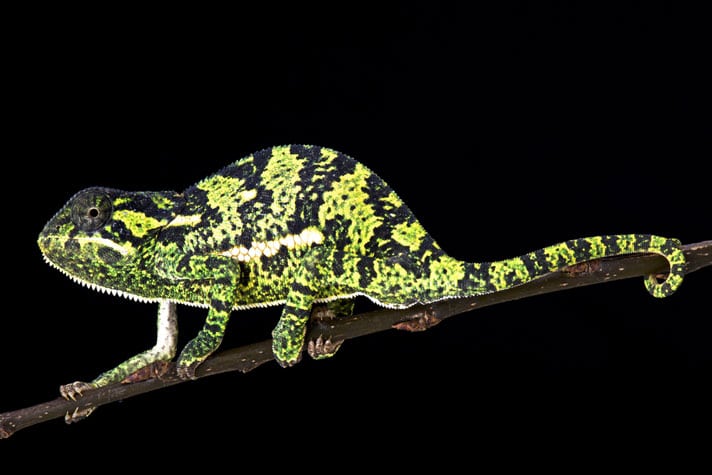
The flapneck chameleon (scientifically known as Chamaeleo dilepis) is easily identifiable due to its unique physical features. The noticeable feature of this species is its large, prominent flap of skin that runs off the sides of its neck. This flap is a key characteristic of the flapneck chameleon and is particularly prominent during mating displays or moments of aggression. The flap has various functions, which include being used as a sign of dominance or being a component of the courtship process of a chameleon. This flap is puffed out when the chameleon feels threatened or when it is in mating season, causing the chameleon to expand and look bigger and more daunting to the contestants and their attackers.
In addition to the flap, the flapneck chameleon possesses the typical features of a chameleon, such as independently moving eyes, a long prehensile tail, and zygodactylous feet (feet that are adapted for grasping). Their skin is green and brown, which enables them to conveniently mix in their surroundings which makes them even more camouflaged. However, unlike some chameleon species that exhibit extreme color changes, flapneck chameleons primarily use their color-changing abilities for communication and temperature regulation, rather than for camouflage.
They are also differentiated by their size, as compared to other chameleons. Flapneck chameleons are relatively large, with some individuals reaching up to 24 inches in length, including the tail. Their combination of size and dissimilarity makes them a spectacular and unforgettable animal to witness in the wild.
2. Exceptional Color-Changing Abilities
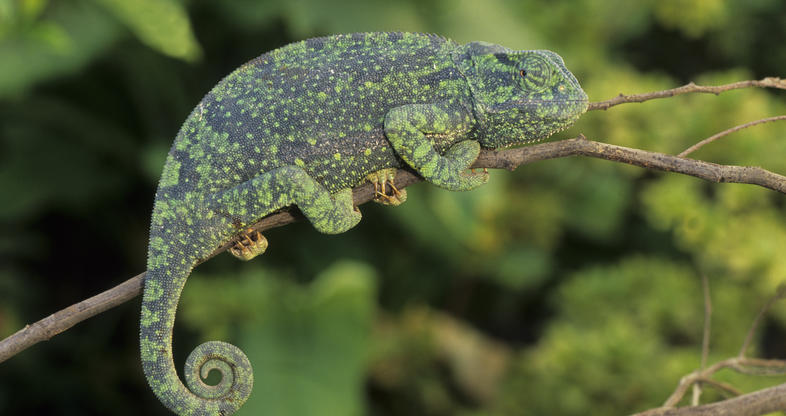
One of the most well-known facts about the flapneck chameleon is its ability to change color. The flapneck has the ability to change the color of their skin like many other chameleons, though it is done in a different manner than others. While most chameleons change color for camouflage, the flapneck chameleon primarily uses this ability for communication, mood regulation, and thermoregulation.
Flapneck chameleons exhibit a range of colors that are influenced by several factors, including their environment, temperature, and emotional state. When frightened or when meeting a confrontation, the chameleon can shift to the darker side to display anger or intimidation. On the other hand, in finding a mate, male might show brighter colors to attract the female thereby showing their fitness and their vitality. Depending on the mood and health condition, the shade of these colors may go between pale green and brown or bright blue and red.
Beyond social interactions, color change in the flapneck chameleon also plays a role in regulating body temperature. These reptiles are also cold-blooded and therefore depend on external temperature to regulate their body temperature. By adjusting their skin color to lighter or darker shades, flapneck chameleons can absorb more or less heat from the sun, allowing them to control their internal temperature more effectively. The darker ones absorb heat easier and the lighter ones reflect it, and colour change is a major means of thermoregulation.
This remarkable ability to change color not only helps the flapneck chameleon adapt to its environment but also aids in communication with other chameleons. Their color changes serve as an indicator, giving messages such as whether they want to fight, will submit, or are ready to mate.
3. Remarkable Hunting Techniques
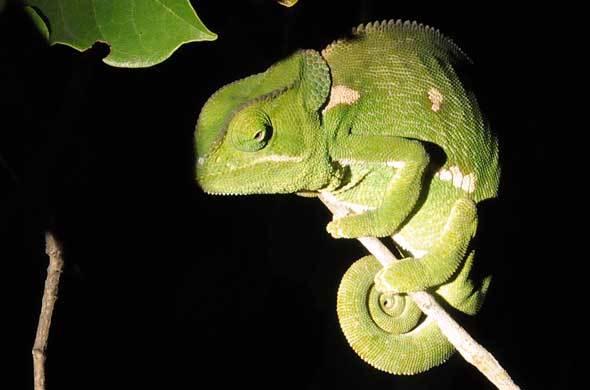
Another fascinating fact about the flapneck chameleon is its unique and highly effective hunting techniques. Chameleons are known for their ability to capture prey using their long, sticky tongues, and the flapneck chameleon is no exception. What makes them stand out is the insane accuracy and rapidity at which they attack their prey.
The flapneck chameleon has a specialized tongue that can extend up to twice the length of its body. This tongue is held up in a spring-like arrangement in the mouth of the chameleon and is fired forth at a high speed to grab unsuspecting insects. The end of the tongue is covered with a sticky mucus, so it can grab its prey with surgical precision. After catching its prey, the chameleon disengages its tongue back into its mouth and feeds it without any particular effort.
This method of hunting is highly effective, as it allows the flapneck chameleon to remain stationary and avoid detection by potential predators. Their fine camouflage adds even more to this hunting technique, being able to match their neighbors perfectly and sit patiently until an insect (flies, grasshopper, beetles) drifts within reach of their tongue. Flapneck chameleons have also been observed using their long tails to help stabilize their bodies while they hunt, which allows them to maintain perfect balance and precision when striking their prey. This combination of adaptability, patience, and specialized hunting techniques makes the flapneck chameleon a skilled predator in its environment.
4. Solitary and Territorial Behavior
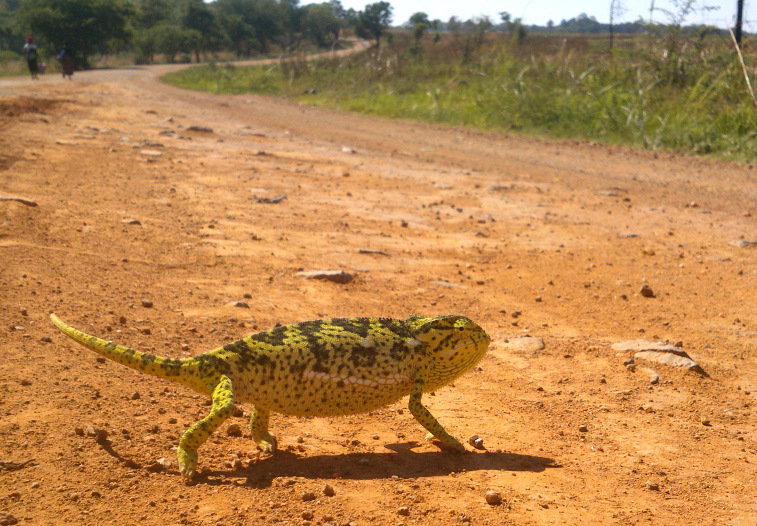
While many chameleon species are solitary by nature, the flapneck chameleon takes this behavior to an extreme. These reptiles are very territorial, especially males who are known to protect their territory aggressively. They alert other males with their large neck flaps, color displays and vocalization to stay out of their territory to assert their dominance.
Males put on lavish displays to attract females during mating season. These performances frequently involve puffing out their neck flaps, color changes, and head-bobbing in a rhythmical manner. This behavior is both an act of aggression to other males and the representation of the male as physically fit in terms of genetic quality to potential mates.
Interestingly, flapneck chameleons are not social creatures and generally avoid interaction with other members of their species unless it is for mating purposes. Whereas females might live peacefully within their territory, males are very dominant toward one another and will go to bouts to gain superiority in their terrain. Such territorial tendencies prevent the chances of fighting over amenities like food and shelter as each chameleon gets his space and maintains a safety zone in which survival can now be guaranteed.
This isolation is a life strategy that minimizes resource competition, and the risk of being attacked. By staying hidden and maintaining a low profile, flapneck chameleons can avoid predators while focusing on their primary needs, such as feeding and reproduction.
5. Vulnerabilities and Conservation Status

Despite their formidable appearance and impressive abilities, flapneck chameleons face several threats in the wild. Habitat loss Because of deforestation and human encroachment, this is one of the major factors that have affected their population. As the natural habitats of flapneck chameleons are destroyed or fragmented, they are forced into smaller, more isolated areas, which limits their access to food and suitable mates.
In addition to habitat destruction, the pet trade has also contributed to the decline of flapneck chameleon populations. Because the reptiles are very popular due to their unusual looks and habits, a good number of them are taken out of the wild and sold as pets. Although there are some chameleons capable of living under captivity with appropriate care, taking them out of the wild can cause a local imbalance in species spreading and thus put their survival at risk.
Fortunately, flapneck chameleons are not yet classified as endangered, but their populations are vulnerable in certain regions. Preservation is being exercised with efforts to conserve their natural habitats and regulate the pet trade to ensure they continue to thrive in their habitats in the wilderness. Local conservation initiatives, along with international wildlife protection laws, aim to preserve the habitats of the flapneck chameleon and other vulnerable species.
Conclusion
In conclusion, the flapneck chameleon is a truly fascinating reptile that exhibits a wide range of unique traits, from its striking physical appearance to its incredible hunting abilities. The facts about the flapneck chameleon are a testament to its adaptability and resilience in the face of environmental challenges. This species of chameleons is so fascinating; it is a masterpiece of nature through its color changing confines, territorial character and its hunting strategies. However, as with many other species, the flapneck chameleon’s survival depends on our collective efforts to protect its habitat and ensure its continued existence in the wild.

